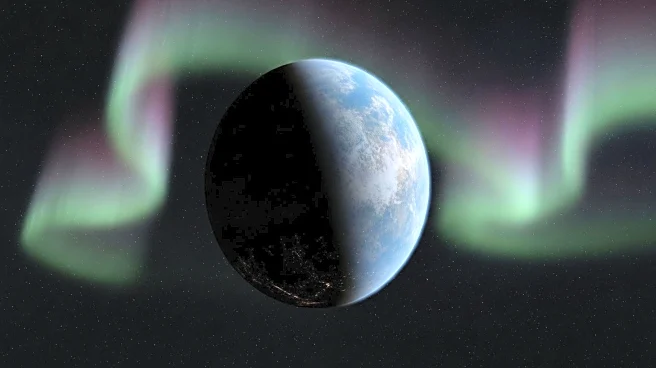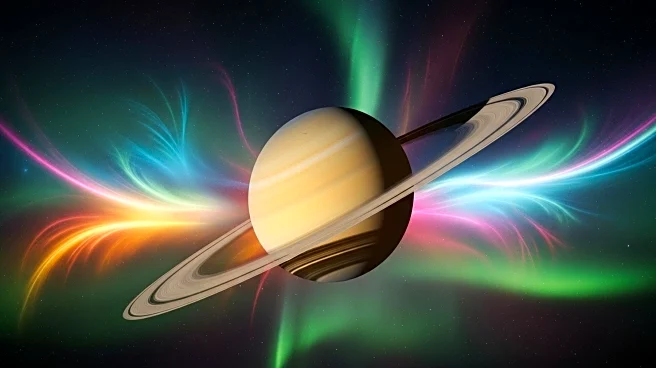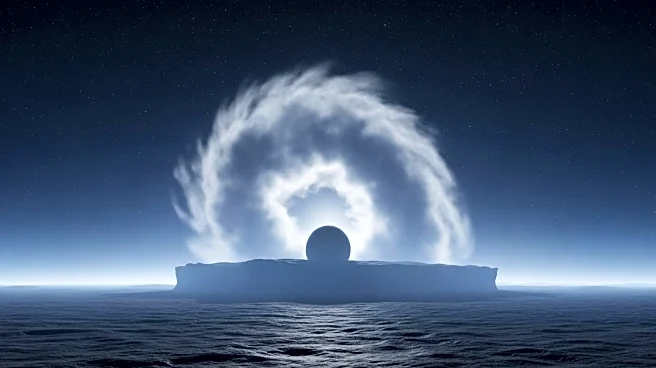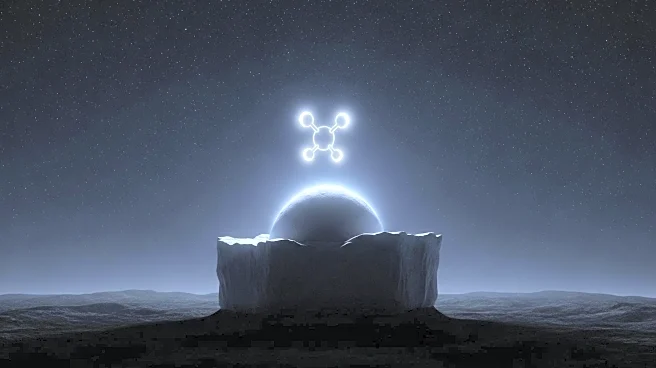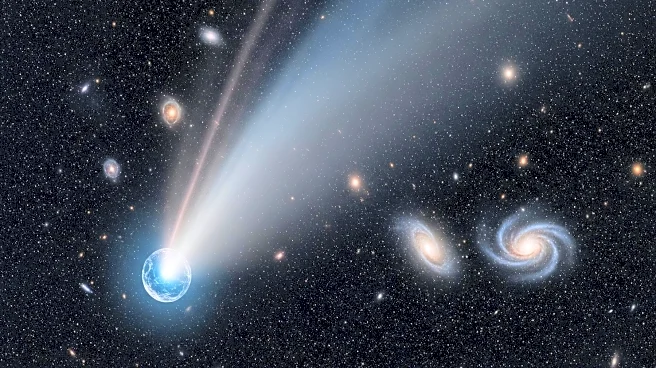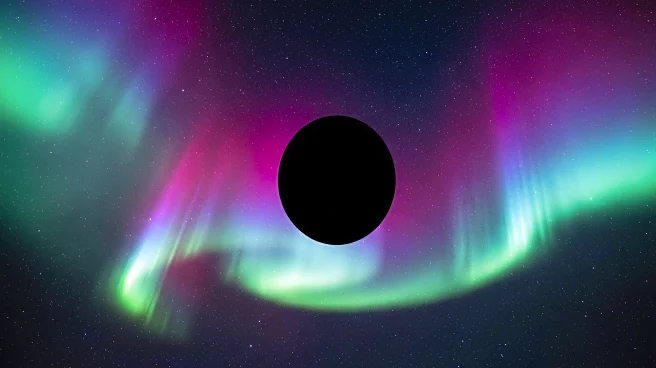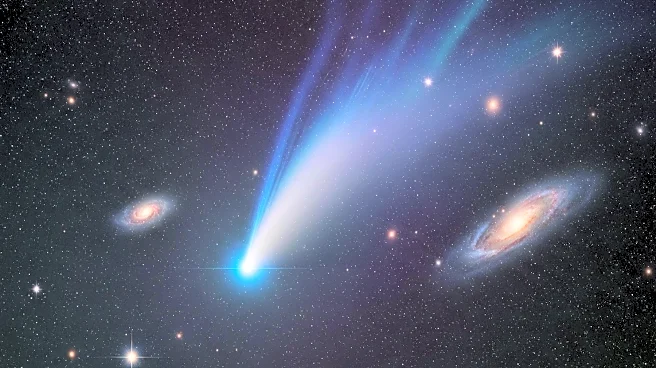What is the story about?
What's Happening?
NASA's James Webb Space Telescope (JWST) has examined SIMP-0136, a rogue planet located approximately 20 light-years from Earth, revealing that its auroras are responsible for heating its upper atmosphere. The study, published in Astronomy & Astrophysics, found that SIMP-0136 exhibits thermal inversion, with colder temperatures near the surface and hotter temperatures at higher altitudes. The planet also has constant global cloud coverage composed of silicate grains, contrasting with Earth's water-based clouds.
Why It's Important?
The findings provide insights into the atmospheric composition and behavior of rogue planets, which do not orbit a star. Understanding these planets can enhance knowledge of planetary formation and evolution, offering clues about the processes that govern atmospheric dynamics. The study contributes to the broader understanding of planetary science and the diversity of celestial bodies in the universe.
What's Next?
Future research may focus on exploring the implications of auroras on rogue planets and their potential impact on atmospheric conditions. The upcoming Nancy Grace Roman Space Telescope, scheduled to launch in 2027, will aid in identifying and studying rogue planets, potentially leading to new discoveries about their characteristics and formation.
Beyond the Headlines
The study of rogue planets challenges traditional notions of planetary systems, highlighting the complexity and diversity of celestial bodies. The unique atmospheric conditions observed on SIMP-0136 may offer new perspectives on the potential for life and the adaptability of planets in different environments.
AI Generated Content
Do you find this article useful?
